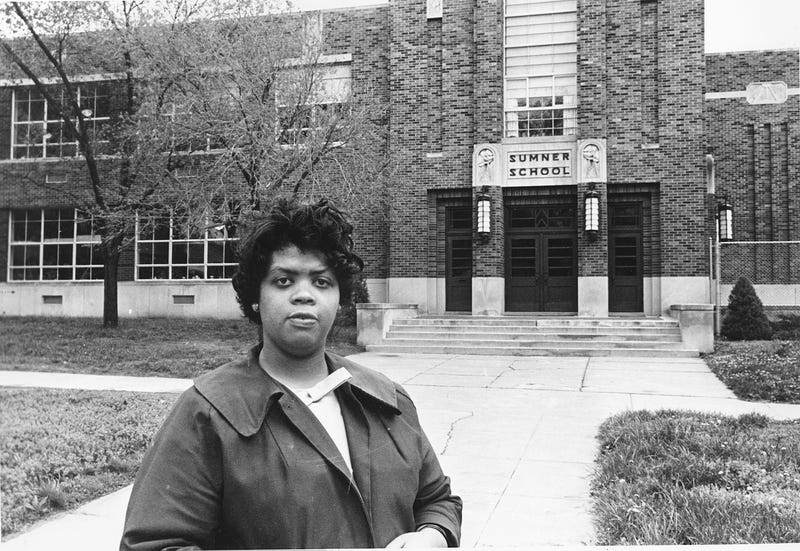
Linda Brown was a third-grader who was barred from attending an all-white school in her neighborhood. Her father, Oliver, filed a lawsuit that would become the basis of the landmark Brown v. Board of Education Supreme Court case, which led to the desegregation of schools. Brown died in Topeka, Kan., on Sunday. She was 76.
Brown’s sister, Cheryl Brown-Henderson, confirmed her death to the Topeka Capital-Journal. Brown-Henderson said that the family would not be commenting on Brown’s death.
In 1951, Oliver Brown attempted to enroll his daughter in the all-white Sumner Elementary School near their home in Topeka. He was denied and told to send his daughter to the all-black Monroe School, which was about 2 miles from the family’s home.
At the time, Topeka had 18 schools for white children and just four for black children.
Oliver Brown took that denial and joined other plaintiffs involved in an NAACP legal challenge of school segregation in Kansas. Eventually that case, and cases from four other states and the District of Columbia, were consolidated into the case now known as Brown v. Board of Education.
In 1954 the U.S. Supreme Court ruled that “separate but equal” schools violated the equal protection clause of the 14th Amendment, thus legally ending school segregation.
In 1979 Linda Brown—who was now a mother with her own children in Topeka schools—became a plaintiff in a resurrected version of the Brown v. Board case that sued Topeka schools for not following through with desegregation.
According to the Capital-Journal, the federal judge in that case sided with the school district in 1987, but an appeals court reversed his decision in 1989, and the Supreme Court chose not to review that decision. In 1983 Judge Richard Rogers approved a desegregation plan for Topeka Unified School District 501.
On Monday, Kansas state officials spoke of Brown and the lasting impact she made on the country.
Kansas Gov. Jeff Colyer said: “Sixty-four years ago a young girl from Topeka brought a case that ended segregation in public schools in America. Linda Brown’s life reminds us that sometimes the most unlikely people can have an incredible impact, and that by serving our community, we can truly change the world.”
Kansas Deputy Education Commissioner Dale Dennis told the Capital-Journal: “Her legacy is not only here but nationwide. The effect she had on our society would be unbelievable and insurmountable.”
Brown was born in Topeka on Feb. 20, 1942. The cause of her death has not been disclosed publicly at this time.




